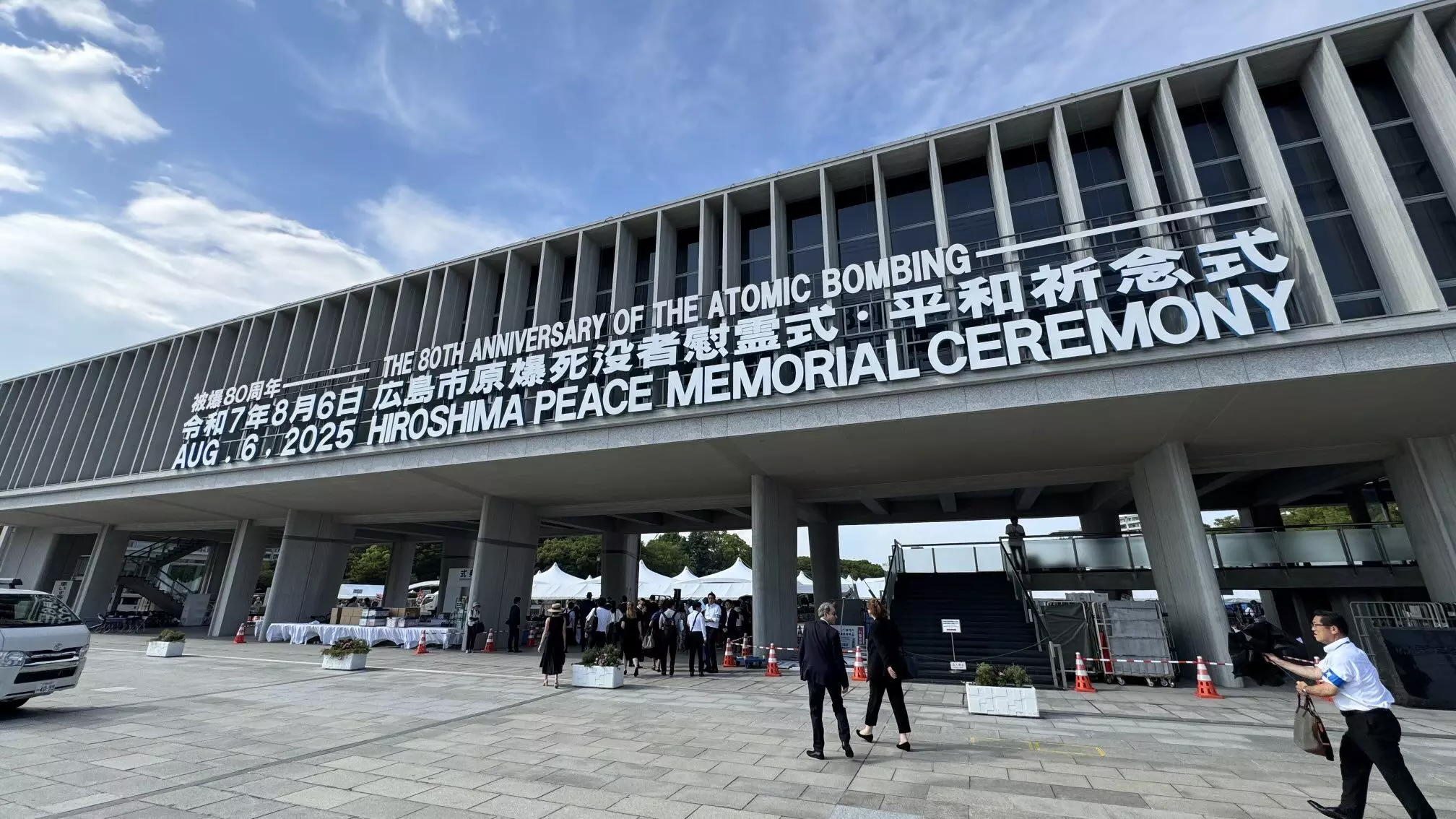Hiroshima & Nagasaki: Lessons unlearnt in a world on the brink of a new nuclear race
Eighty-one years after the atomic bombings of Hiroshima and Nagasaki, which claimed over 2,00,000 lives by the end of 1945, the world still teeters on the edge of nuclear catastrophe.

The Hiroshima Peace Memorial Center (Photo - @CZAmbTokyo / X)
The Japanese bombing of Pearl Harbor on December 7, 1941, with the objective of crippling the powerful American fleet, brought the United States officially into World War II. The retaliatory fighting by the US forces showed them how costly a ground and sea campaign against the fiercely combative Japanese would be. After President Roosevelt died on April 12, 1945, it fell to Harry Truman's lot to decide how to end the war. Mean-while, the Americans had embarked on the Manhattan Project, a secret scientific effort to develop an atomic bomb.
After the weapon had been successfully tested, Truman was confident enough to issue the Potsdam Declaration demanding the unconditional surrender of the Japanese, warning of "prompt and utter destruction." Eleven days later, on August 6, 1945, having received no reply, an American bomber called the Enola Gay dropped the 'Little Boy, an atomic bomb, on the Japanese city of Hiroshima.
Not even the leader of the project, Robert Oppenheimer, could visualise the extent of the devastation the bomb would cause. In the event, around 80,000 people were instantly killed and thousands died later from radiation sickness. On August 9, 1945, another bomb, named 'Fat Man,' was dropped on Nagasaki, instantly incinerating 39,000. Both cities being levelled by the bombs, the horrific outcome forced Japan to surrender, thereby bringing the Second World War to an end.
All in all, the twin explosions claimed over 2,00,000 lives by the end of that year from the grievous effects of thermal blast and ionising radiation. As Japan marks the 81st anniversary of the dropping of the bombs, those horrific consequences remain a perennial reminder as to what would happen if such an event were to recur.
The Cassandras prognosticate an end to human civilisation, given that a Third World War would be a nuclear one! Despite this, however, humanity continues to engage in a nuclear race, as more and more countries attempt to arm themselves with nuclear weapons. With rogue regimes like North Korea, and militant ones like Iran, endeavouring to climb onto the nuclear bandwagon, today, experts count that there are more than 13,000 nuclear warheads still in existence.
Little wonder the argument that, since nations would be aware of the horrific consequences of nuclear weapons they would refrain from using them, is being converted into a myth!
Today, a new nuclear arms race and the unregulated use of technologies have, in fact, enhanced fears about accidental or inadvertent use of nuclear weapons. It is imperative that the world remembers the atomic bombing of Japan with a fresh determination to achieve a nuclear weapons-free world. The Hiroshima and Nagasaki commemorations must induce a course correction in the direction humanity is currently taking.
